LensCrafters 2015 Annual Report Download - page 195
Download and view the complete annual report
Please find page 195 of the 2015 LensCrafters annual report below. You can navigate through the pages in the report by either clicking on the pages listed below, or by using the keyword search tool below to find specific information within the annual report.-
 1
1 -
 2
2 -
 3
3 -
 4
4 -
 5
5 -
 6
6 -
 7
7 -
 8
8 -
 9
9 -
 10
10 -
 11
11 -
 12
12 -
 13
13 -
 14
14 -
 15
15 -
 16
16 -
 17
17 -
 18
18 -
 19
19 -
 20
20 -
 21
21 -
 22
22 -
 23
23 -
 24
24 -
 25
25 -
 26
26 -
 27
27 -
 28
28 -
 29
29 -
 30
30 -
 31
31 -
 32
32 -
 33
33 -
 34
34 -
 35
35 -
 36
36 -
 37
37 -
 38
38 -
 39
39 -
 40
40 -
 41
41 -
 42
42 -
 43
43 -
 44
44 -
 45
45 -
 46
46 -
 47
47 -
 48
48 -
 49
49 -
 50
50 -
 51
51 -
 52
52 -
 53
53 -
 54
54 -
 55
55 -
 56
56 -
 57
57 -
 58
58 -
 59
59 -
 60
60 -
 61
61 -
 62
62 -
 63
63 -
 64
64 -
 65
65 -
 66
66 -
 67
67 -
 68
68 -
 69
69 -
 70
70 -
 71
71 -
 72
72 -
 73
73 -
 74
74 -
 75
75 -
 76
76 -
 77
77 -
 78
78 -
 79
79 -
 80
80 -
 81
81 -
 82
82 -
 83
83 -
 84
84 -
 85
85 -
 86
86 -
 87
87 -
 88
88 -
 89
89 -
 90
90 -
 91
91 -
 92
92 -
 93
93 -
 94
94 -
 95
95 -
 96
96 -
 97
97 -
 98
98 -
 99
99 -
 100
100 -
 101
101 -
 102
102 -
 103
103 -
 104
104 -
 105
105 -
 106
106 -
 107
107 -
 108
108 -
 109
109 -
 110
110 -
 111
111 -
 112
112 -
 113
113 -
 114
114 -
 115
115 -
 116
116 -
 117
117 -
 118
118 -
 119
119 -
 120
120 -
 121
121 -
 122
122 -
 123
123 -
 124
124 -
 125
125 -
 126
126 -
 127
127 -
 128
128 -
 129
129 -
 130
130 -
 131
131 -
 132
132 -
 133
133 -
 134
134 -
 135
135 -
 136
136 -
 137
137 -
 138
138 -
 139
139 -
 140
140 -
 141
141 -
 142
142 -
 143
143 -
 144
144 -
 145
145 -
 146
146 -
 147
147 -
 148
148 -
 149
149 -
 150
150 -
 151
151 -
 152
152 -
 153
153 -
 154
154 -
 155
155 -
 156
156 -
 157
157 -
 158
158 -
 159
159 -
 160
160 -
 161
161 -
 162
162 -
 163
163 -
 164
164 -
 165
165 -
 166
166 -
 167
167 -
 168
168 -
 169
169 -
 170
170 -
 171
171 -
 172
172 -
 173
173 -
 174
174 -
 175
175 -
 176
176 -
 177
177 -
 178
178 -
 179
179 -
 180
180 -
 181
181 -
 182
182 -
 183
183 -
 184
184 -
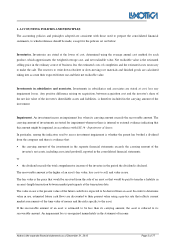 185
185 -
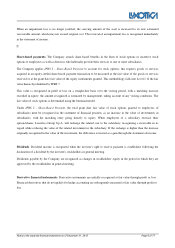 186
186 -
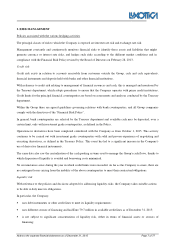 187
187 -
 188
188 -
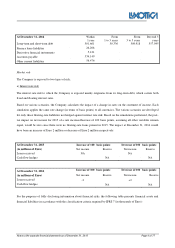 189
189 -
 190
190 -
 191
191 -
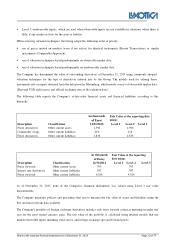 192
192 -
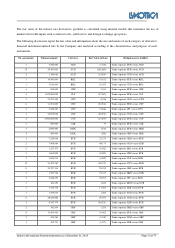 193
193 -
 194
194 -
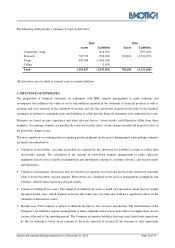 195
195 -
 196
196 -
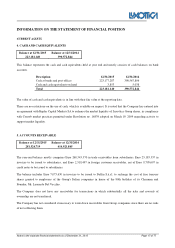 197
197 -
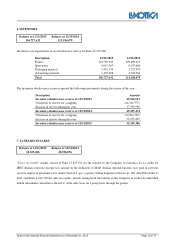 198
198 -
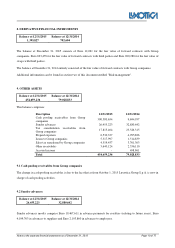 199
199 -
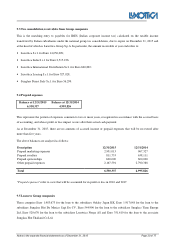 200
200 -
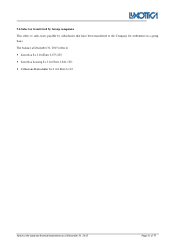 201
201 -
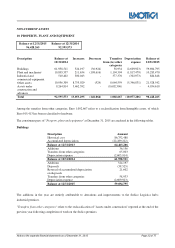 202
202 -
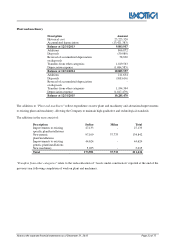 203
203 -
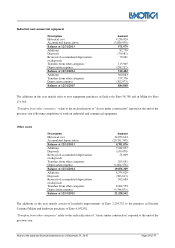 204
204 -
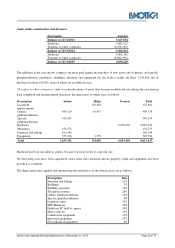 205
205 -
 206
206 -
 207
207 -
 208
208 -
 209
209 -
 210
210 -
 211
211 -
 212
212 -
 213
213 -
 214
214 -
 215
215 -
 216
216 -
 217
217 -
 218
218 -
 219
219 -
 220
220 -
 221
221 -
 222
222 -
 223
223 -
 224
224 -
 225
225 -
 226
226 -
 227
227 -
 228
228 -
 229
229 -
 230
230 -
 231
231 -
 232
232 -
 233
233 -
 234
234 -
 235
235 -
 236
236 -
 237
237 -
 238
238 -
 239
239 -
 240
240 -
 241
241 -
 242
242 -
 243
243 -
 244
244 -
 245
245 -
 246
246 -
 247
247 -
 248
248 -
 249
249 -
 250
250 -
 251
251 -
 252
252 -
 253
253 -
 254
254 -
 255
255 -
 256
256 -
 257
257 -
 258
258 -
 259
259 -
 260
260 -
 261
261 -
 262
262 -
 263
263 -
 264
264 -
 265
265 -
 266
266 -
 267
267 -
 268
268 -
 269
269 -
 270
270
 |
 |

Notes to the separate financial statements as of December 31, 2015 Page 15 of 77
The following table presents a summary by type of derivative:
2015 2014
Assets
Liabilities
Assets
Liabilities
Commodity swaps -
(218,307)
-
(597,229)
Forwards 705,539
(768,283)
702,604
(4,524,039)
Swaps 690,288
(1,065,248)
-
-
Collars -
(2,053)
-
-
Total 1,395,827
(2,053,891)
702,604
(5,121,268)
All derivatives are classified as current assets or current liabilities.
3. INFLUENCE OF ESTIMATES
The preparation of financial statements in conformity with IFRS requires management to make estimates and
assumptions that influence the value of assets and liabilities reported in the statement of financial position as well as
revenues and costs reported in the statement of income, and also the disclosures included in the notes to the financial
statements in relation to contingent assets and liabilities as of the date the financial statements were authorized for issue.
Estimates are based on past experience and other relevant factors. Actual results could therefore differ from those
estimates. Accounting estimates are periodically reviewed and the effects of any change are reflected in profit or loss in
the period the change occurs.
The most significant accounting policies requiring greater judgment on the part of management when making estimates
are briefly described below.
• Valuation of receivables. Accounts receivable are adjusted by the allowance for doubtful accounts to reflect their
recoverable amount. The calculation of the amount of write-down requires management to make subjective
judgments based on the available documentation and information relating to customer solvency, and on past trends
and experience;
• Valuation of inventories. Inventories that are obsolete are regularly reviewed and written down if their net realizable
value is lower than their carrying amount. Write-downs are calculated on the basis of management assumptions and
estimates, derived from experience and past results;
• Valuation of deferred tax assets. The valuation of deferred tax assets is based on expectations about forecast taxable
income in future years, which depends on factors that could vary over time and could have significant effects on the
valuation of deferred tax assets;
• Income taxes. The Company is subject to different income tax laws in many jurisdictions. The determination of the
Company's tax liabilities requires management to make judgments about transactions whose tax implications are not
certain at the end of the reporting period. The Company recognizes liabilities that may arise from future inspections
by the tax authorities, based on an estimate of the taxes expected to be paid. If the outcome of such inspections
